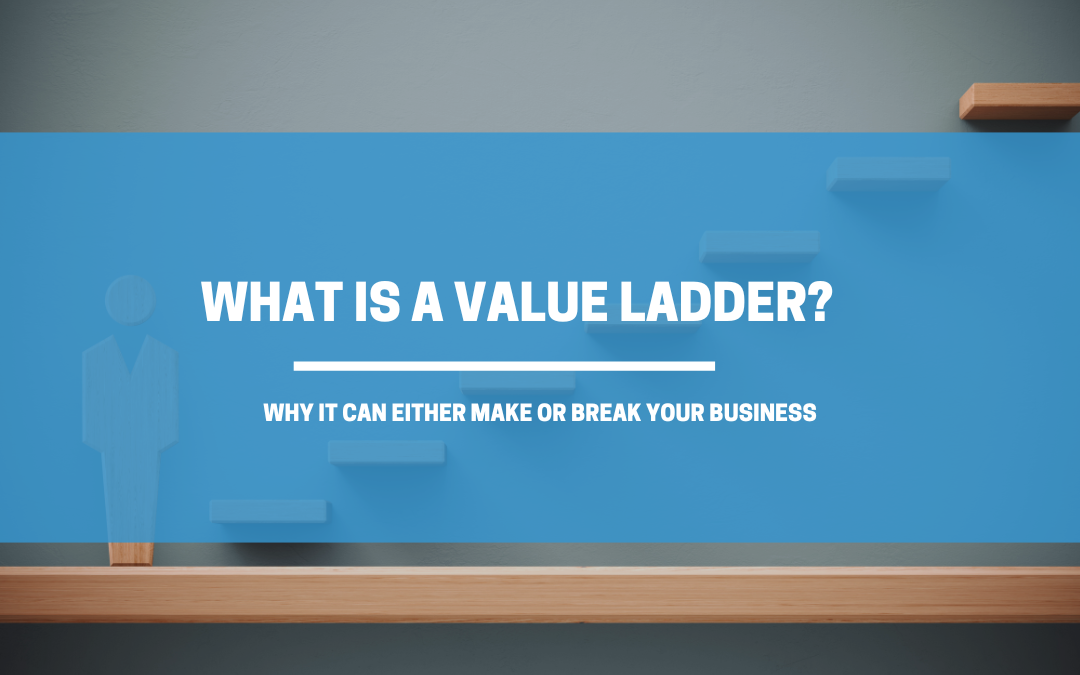In today’s competitive business environment, small and medium-sized businesses (SMBs) often face a tough balancing act: offering value to customers while maximizing revenue and building long-term loyalty. Enter the value ladder—a powerful, yet underutilized marketing framework that can address these challenges head-on.
What Is a Value Ladder (and Why It Matters for SMBs)?
A value ladder is a structured sequence of offers that guide customers from an initial, low-commitment engagement toward higher-value, premium offerings. Each rung on the ladder offers increased value—and usually comes with a higher price tag. (Thinkific, unicorngrowth.io, The Leap)
For SMBs, this model is especially potent because it:
- Captures different income levels — Each segment of your market can start with what fits their budget and gradually move up as they trust your brand. (clickfunnels.com, Thinkific)
- Boosts Customer Lifetime Value (CLV) — By offering escalating value through multiple touchpoints, you keep customers engaged and spending. (marketingsecrets.com, Penn State Extension)
- Creates a clear customer journey — You gain clarity around what to offer and how to guide customers naturally through your ecosystem. (clickfunnels.com, conversionminded.com)

Micro vs. Macro Value Ladders—What SMBs Need to Know
Micro Value Ladder
Think of this as an immediate upsell sequence—a mini funnel embedded within a single transaction. It might be:
- A free consultation → discounted report → core service package offered in a single flow
- Or an order bump at checkout (e.g., add a small-tier accessory to a product being purchased) (marketingsecrets.com, Dream Local Digital)
Macro Value Ladder
This is the long-term roadmap—the full spectrum of offerings that gradually elevate a customer’s involvement over time:
- Free resource (e.g., guide or trial) → low-cost entry offer → mid-tier service → premium/subscription (marketingsecrets.com, Dream Local Digital, newsletter.supermarketers.ai)
For SMBs, starting small with a micro value ladder can yield quick wins. As you grow, craft a macro ladder for sustained customer progression.
Why SMBs Should Build a Value Ladder
1. Meet Customers Where They Are
Not everyone is ready to buy your high-end services right away. A value ladder allows you to engage prospects at their comfort level, starting with free or low-cost offers and scaling as trust builds. (conversionminded.com, The Leap)
2. Elevate Average Order Value and CLV
By guiding customers through higher-value offerings over time, you enhance revenue per customer—without needing to acquire new customers constantly. (marketingsecrets.com, Thinkific)
3. Build Loyalty Through Value
When every tier genuinely serves your customers, you naturally increase satisfaction, trust, and referral potential. (conversionminded.com, Penn State Extension)
4. Simplify Offering Strategy
Structuring your services into rungs helps provide clarity—both internally for your team and externally for your customers. (clickfunnels.com, Dream Local Digital)
How to Build Your Value Ladder: A Step-by-Step Guide for SMB Owners
Let’s break it down into actionable steps.
1. Understand Your Ideal Customer Deeply
Begin with a clear customer profile. Ask:
- Who are they? (Industry, role, budget)
- What challenges keep them up at night?
- How do they prefer to engage (DIY materials, personal service, digital)?
This understanding is your foundation. (clickfunnels.com, Dream Local Digital)
2. List Your Potential Offers
Start broadly—even if you only currently offer one or two services, envision others:
- Free downloadable guide, checklist, or video walkthrough
- Intro-level product or consultation
- Core service (your bread-and-butter offering)
- Premium services—long-term contracts, consulting packages, subscription products
3. Design a Customer Journey Through Those Offers
Map out how a prospect might move up:
- Lead magnet (free toolkit or audit)
- Entry offer (low-cost audit or starter pack)
- Core package (ongoing service or product subscription)
- Premium add-ons (advanced support, custom solutions, membership)
Each step increases in value—and price—while addressing evolving needs. (newsletter.supermarketers.ai, The Leap)
4. Create Funnel Mechanics (The Micro Ladder)
Implement tactical upsells or cross-sells:
- At checkout, offer a small complementary add-on
- After a service, invite clients to a deeper level (e.g., from one-off service to quarterly package)
- Use email drip sequences to suggest the next step when the time is right
5. Scale Over Time
Start with just your top one or two offers, perfect them, and only then add the next rung. This prevents overwhelm and ensures each tier delivers. (clickfunnels.com, SupplyGem)
Real-World SMB Examples
Example: Local Café
- Free: Recipe PDF or seasonal drink coupon → email signup
- Entry: Tasting event or “coffee of the month” club trial
- Core: Monthly subscription (e.g., home delivery of coffee beans)
- Premium: Barista class or hospitality workshops
Example: Boutique Accounting Firm
- Free: Quick-start tax checklist
- Entry Offer: Basic financial audit at affordable rate
- Core: Monthly bookkeeping or tax services
- Premium: Full financial strategy service with CFO guidance
Example: Local Fitness Studio
- Free: Introductory group class
- Entry: 5-class pass at a discounted price
- Core: Monthly membership
- Premium: One-on-one coaching and personalized nutrition plan
The key: each rung adds more value, clearly inviting the customer to progress to the next stage.
Additional Tips for SMB Success
- Keep value as the core driver—Don’t upsell just for revenue; every offer must meaningfully solve your customer’s needs. (marketingsecrets.com)
- Use continuity elements—Subscription or membership models at the top of the ladder retain customers long-term and create predictable revenue. (marketingsecrets.com)
- Segment offers by customer readiness—Understand where customers are in their decision process and tailor your rungs accordingly. (conversionminded.com, The Leap)
- Adapt and refine with feedback—Monitor conversion rates between steps, identify drop-offs, and refine accordingly.
- Don’t force linear progression—Allow flexibility; some customers may jump from free samples to a premium package. (SupplyGem)
Final Thoughts
A value ladder offers SMBs a strategic roadmap to deepen customer engagement, increase revenue, and foster sustainable growth without losing the personal, value-driven touch.
By understanding your customers, creating tiered offerings, and guiding them through each stage with intentionality, you build relationships—not just transactions.
Let me know if you’d like help designing your own value ladder structure or visual template tailored to your business!



0 Comments